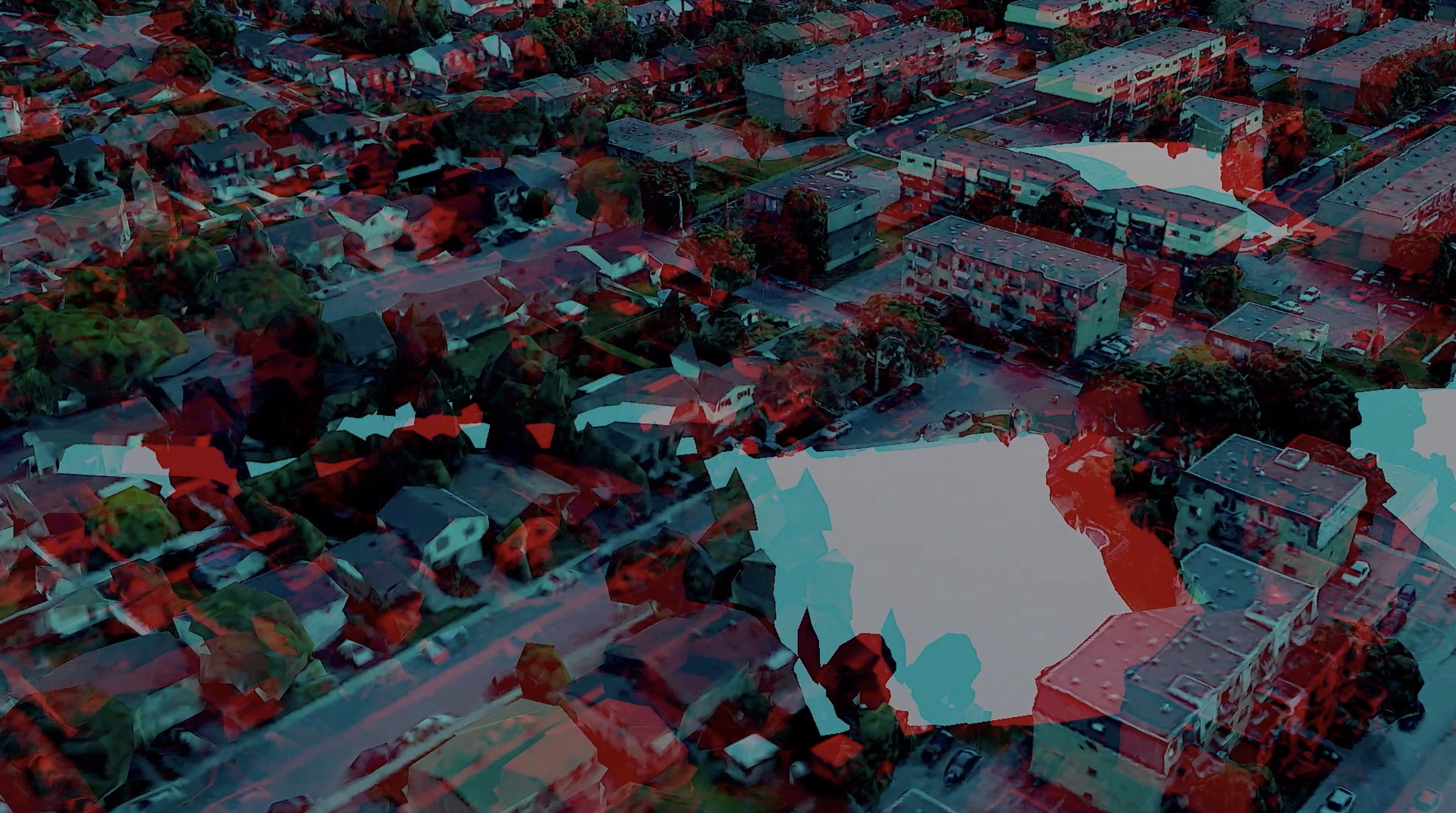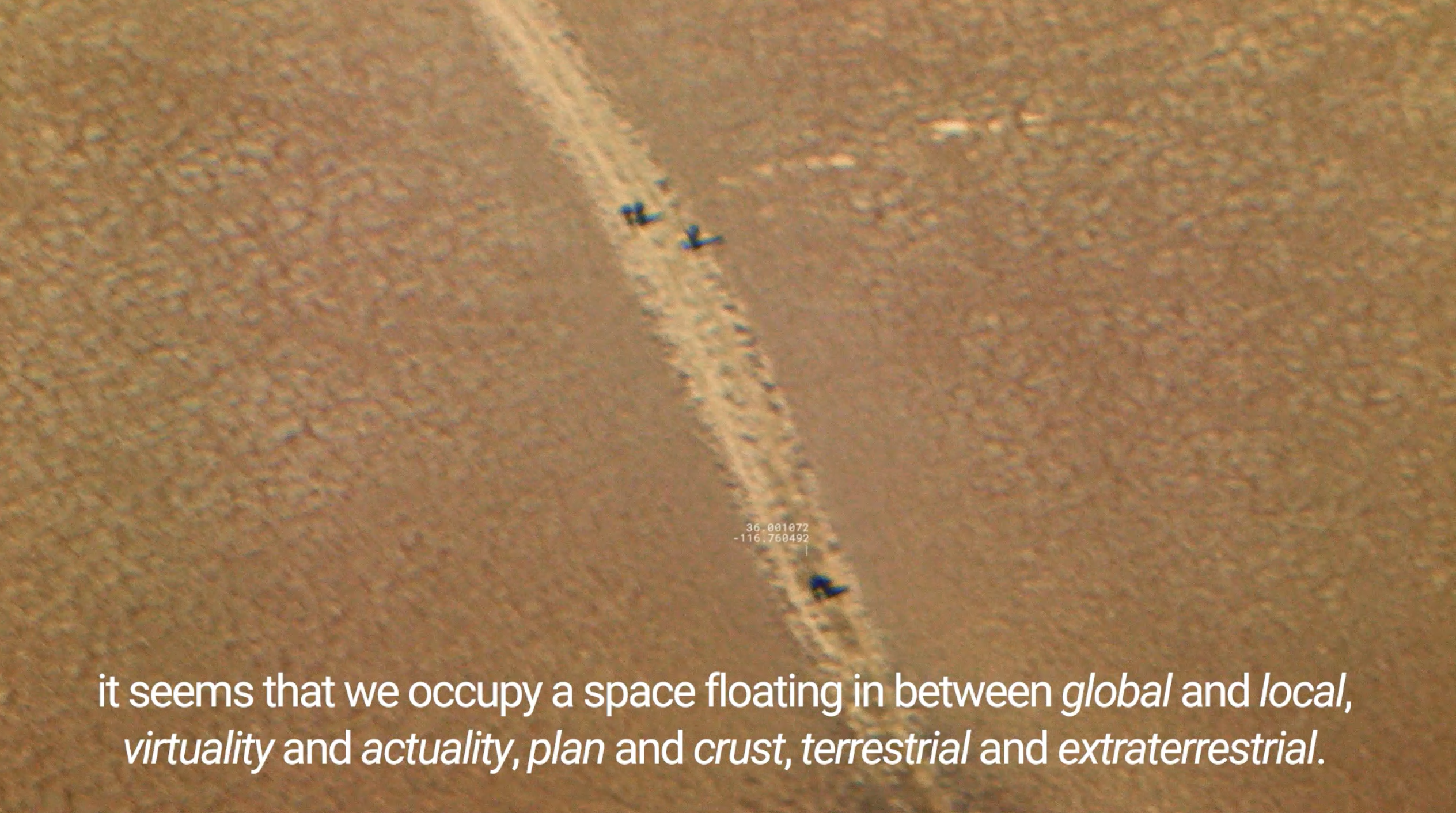Outer Space & the City: Cohabitation Strategies with Interplanetary Infrastructures
Research Team
Dr. Marie-Pier Boucher (PI)
Dr. Alice Jarry
Dr. Bernard Foing
Dr. Emiliano Gandolfi
Dr. Pierre-Louis Patoine
Rouzbeh Akhbari
Majjd Al-Shihabi
Reka Gal
Guillaume Pascale
Gabrielle Simard
Lee Wilkins
Yolanda Zang
Funding
SSHRC



Video stills by Guillaume Pascale. Provocations for the Urbanization of Space Technology. Ars Electronica, 2021.
Today’s most important global telecommunication infrastructures are located in the geostationary orbit (GEO). One satellite in the GEO can "see” 42% of the Earth while three satellites can cover the whole globe (Collis, 2009). A central issue with outer space telecommunication infrastructures is that while they facilitate most of our daily activities, they are not only out of sight, they are also out of reach.
The physical, technical, and economic limitations imposed on/by their accessibility act as hindrances to the possibility of informed civic engagement and creative adaptation.
In response to this problem of structural inequality, the project examines the material forms of this relation and the role of hybrid and participatory design in the construction of sustainable
The physical, technical, and economic limitations imposed on/by their accessibility act as hindrances to the possibility of informed civic engagement and creative adaptation.
In response to this problem of structural inequality, the project examines the material forms of this relation and the role of hybrid and participatory design in the construction of sustainable
interplanetary infrastructures of telecommunication.
At the intersection of Communication & Media Studies, Design & Urbanism, and Space Science & Technology, the project identifies strategies of cohabitation that give rise to unforeseen forms of informed participation & engagement as well as to sustainable connections between space telecommunication infrastructures, the built environment, and urban communities.
Through a series of activities that combine formation in research methods and techniques, literary and visual research, theoretical and practical workshops, ethnographic work and dissemination activities, the project will produce new reflexive tools for the creation of sustainable interplanetary infrastructures of telecommunication.
At the intersection of Communication & Media Studies, Design & Urbanism, and Space Science & Technology, the project identifies strategies of cohabitation that give rise to unforeseen forms of informed participation & engagement as well as to sustainable connections between space telecommunication infrastructures, the built environment, and urban communities.
Through a series of activities that combine formation in research methods and techniques, literary and visual research, theoretical and practical workshops, ethnographic work and dissemination activities, the project will produce new reflexive tools for the creation of sustainable interplanetary infrastructures of telecommunication.




